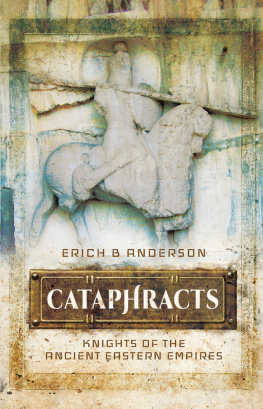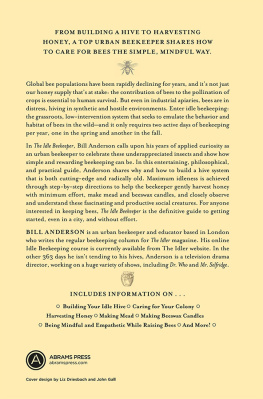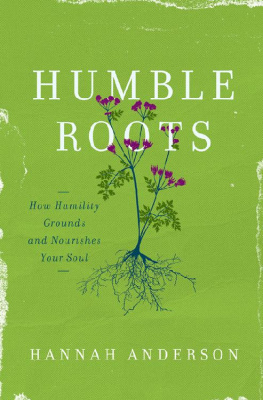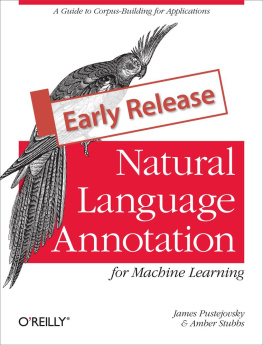Anderson - Cataphracts
Here you can read online Anderson - Cataphracts full text of the book (entire story) in english for free. Download pdf and epub, get meaning, cover and reviews about this ebook. City: Barnsley;Havertown, year: 2016, publisher: Casemate Publishers & Book Distributors, LLC [distributor, Pen & Sword Books Limited, genre: Romance novel. Description of the work, (preface) as well as reviews are available. Best literature library LitArk.com created for fans of good reading and offers a wide selection of genres:
Romance novel
Science fiction
Adventure
Detective
Science
History
Home and family
Prose
Art
Politics
Computer
Non-fiction
Religion
Business
Children
Humor
Choose a favorite category and find really read worthwhile books. Enjoy immersion in the world of imagination, feel the emotions of the characters or learn something new for yourself, make an fascinating discovery.
- Book:Cataphracts
- Author:
- Publisher:Casemate Publishers & Book Distributors, LLC [distributor, Pen & Sword Books Limited
- Genre:
- Year:2016
- City:Barnsley;Havertown
- Rating:3 / 5
- Favourites:Add to favourites
- Your mark:
- 60
- 1
- 2
- 3
- 4
- 5
Cataphracts: summary, description and annotation
We offer to read an annotation, description, summary or preface (depends on what the author of the book "Cataphracts" wrote himself). If you haven't found the necessary information about the book — write in the comments, we will try to find it.
Cataphracts — read online for free the complete book (whole text) full work
Below is the text of the book, divided by pages. System saving the place of the last page read, allows you to conveniently read the book "Cataphracts" online for free, without having to search again every time where you left off. Put a bookmark, and you can go to the page where you finished reading at any time.
Font size:
Interval:
Bookmark:

CATAPHRACTS
For my brother, Sean, and my grandfather, Robert.
You are missed every day.
Knights of the Ancient Eastern Empires
Erich B Anderson
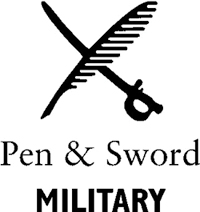
First published in Great Britain in 2016 by
PEN & SWORD MILITARY
an imprint of
Pen & Sword Books Ltd
47 Church Street
Barnsley
South Yorkshire
S70 2AS
Copyright Erich B Anderson, 2016
ISBN 978-1-47383-798-0
eISBN 978-1-47388-957-6
Mobi ISBN 978-1-47388-956-9
The right of Erich B Anderson to be identified as Author of this work has been asserted by him in accordance with the Copyright, Designs and Patents Act 1988.
A CIP catalogue record for this book is available from the British Library.
All rights reserved. No part of this book may be reproduced or transmitted in any form or by any means, electronic or mechanical including photocopying, recording or by any information storage and retrieval system, without permission from the Publisher in writing.
Pen & Sword Books Ltd incorporates the Imprints of Pen & Sword Aviation, Pen & Sword Family History, Pen & Sword Maritime, Pen & Sword Military, Pen & Sword Discovery, Pen & Sword Politics, Pen & Sword Atlas, Pen & Sword Archaeology, Wharncliffe Local History, Wharncliffe True Crime, Wharncliffe Transport, Pen & Sword Select, Pen & Sword Military Classics, Leo Cooper, The Praetorian Press, Claymore Press, Remember When, Seaforth Publishing and Frontline Publishing.
For a complete list of Pen & Sword titles please contact
PEN & SWORD BOOKS LIMITED
47 Church Street, Barnsley, South Yorkshire, S70 2AS, England
E-mail:
Website: www.pen-and-sword.co.uk
First of all, I am extremely grateful to Philip Sidnell of Pen & Sword who has not only given me this opportunity to write my first history book, but has also been crucial to the editing process. Furthermore, I want to thank him and several other historians for their earlier work, who have all helped me greatly in telling the story of the cataphracts, including Mariusz Mielczarek, John W. Eadie, M. Michalak, Valerii P. Nikonorov, M.P. Speidel, Bezalel Bar-Kochva, Eric McGeer, and Timothy Dawson, among many others. I must also give my thanks to Dominic Allen for his superb work on the design for the book cover/jacket, and also to Matthew Jones for his excellent work on the production of the book.
I owe a great amount of gratitude to Northern Illinois University as well, particularly the faculty of the history and anthropology departments. Among these excellent professors, I especially need to thank Jason Hawke, Michael Kolb and Valerie Garver. They were pivotal to my early development as a historian and without their guidance I may not have become the published author that I am today.
Jasper Oorthuys of Ancient Warfare accepted my first magazine article proposal, which was titled The Seleucid Cataphract: Origins of Armored Cavalry. This first freelance job not only initiated my career as a writer, but also writing the article made me realize that few people outside of the academic world were even aware of the existence of cataphracts. Therefore, the article helped to put me on the path of creating this book, so for that I owe an enormous debt of gratitude to him. Additionally, I am very grateful to Josho Brouwers, Dirk van Gorp, Edward Zapletal, Erin van der Pijl, Paul Lay, William Welsh, Tim Williamson, Alicea Francis, Lindsay Fulcher, Thomas Hauck, Neil Faulkner, Charlotte Crow, Dennis C. Forbes, J. Peter Phillips, Kyle Lockwood, Peter Konieczny and Jona Lendering. These editors have made it possible for me to pursue my dream career so I give them my deepest thanks.
And last, but certainly not least, I am extremely thankful for the amazing family and friends I am lucky to have in my life, especially my mother and father, Martina and Mark. Without their love and support I may not have gotten this far with my history writing and for that I am beyond grateful. Furthermore, gratitude is due to Kim, Johnny and Rich. Special thanks must also be given to Shannon, Hillary, Jason, Dan, Joe, Rod, P.J. and Ben, among many others that would take too long to list. Becoming a writer is difficult, but their friendship and help have made it easier.
Seleucid arms and armour captured by the Romans after their victory at Magnesia in 190 BC. Illustration by Mark Birge-Anderson.
Terracotta plaque of a Parthian cataphract hunting a lion, from Babylonia, 2nd century AD. British Museum, London.
Depiction of a fully armoured cataphract. Redrawn version of a crude graffito found at Dura Europos, 2nd3rd century AD. Illustration by Mark Birge-Anderson.
A fragment of ancient Roman scale armour ( lorica squamata ). Museum of Somerset, Taunton, UK.
Sarmatian cataphracts flee from Roman cavalry during the Dacian wars (AD 101106) from the reliefs on Trajans Column, Rome, constructed in AD 113. Photo by Conrad Cichorius, 1896.
Sassanian cavalryman with a kontos attacking a fully armoured Parthian rider. Silver plate with gold coating. Azerbaijan Museum, Tabriz, Iran. Photo by Alborz Fallah.
Relief from Firzubad, Iran, depicting the victory in AD 224 of the Sassanian emperor, Ardashir I (r. 224242), and his son, Prince Shapur. Illustration by Eugene Flandin, 1840.
Relief from Naqsh-i Rustam, Iran, depicting the Sassanian emperor, Bahram II (r. 274293), in combat with a foe carrying a broken kontos .
Relief from Naqsh-i Rustam, Iran, showing a Sassanian emperor, Hormuzd II (r. 303309), unhorsing an unknown opponent.
A relief of a Sassanian ruler armoured as a clibanarius from Taq-i Bustan, Iran. It depicts either Khosrow II (r. 590-628) or Peroz I (r. 459-484). Photograph by Javad Yousefi.
Drawing of a relief, which depicts laminated limb armour and a helmet with a metal facemask, from the Column of Arcadius, constructed in 5th century Constantinople.
Mosaic depicting a Late Roman armoured cavalryman mounted on an armoured horse. Photograph courtesy of Simon MacDowall.
Facemask for Roman cavalry, early 1st century AD, from Kalkriese. Museum und Park Kalkriese, Germany. Photograph by Carole Raddato.
Roman cavalry facemask helmet found at Noviomagus, 1st century AD. Museum Het Valkhof, Nijmegen, Netherlands. Photograph by Carole Raddato.
Insignia of the Magistri Officiorum showing the arms and armour of the Roman state factories ( fabricae ) from the Notitia Dignitatum , late 4th/early 5th century AD. MS. Canon. Misc. 378, Roll 159 B, Frame 34. Bodleian Library, Oxford.
Weapons and armour of Late Roman soldiers, including laminated limb defences worn by the cataphracts, from the Notitia Dignitatum . MS. Canon. Misc. 378, Roll 316.2, Frame 2. Bodleian Library, Oxford.
A 14th century illustration that shows a fully armoured Byzantine warrior mounted on an unarmoured horse. Alexander Romance manuscript. San Giorgi de Greci, Venice.
The cavalry of Alexander the Great anachronistically depicted as cataphracts in a 14th century illustration from the Byzantine Alexander Romance manuscript. San Giorgio de Greci, Venice.
Over 2,000 years ago in the spring of 53 BC, Roman general Marcus Licinius Crassus led an enormous army across the Euphrates River in Mesopotamia. Crassus was the third member of the Triumvirate, the alliance of the three most powerful senators who ruled the Roman Republic, which included Pompey the Great and Julius Caesar. Even though he had acquired more wealth than any other plutocrat in the capital and achieved great renown for crushing the slave revolt of Spartacus, Crassus craved further glory in order to ultimately surpass his two rivals. In emulation of Alexander the Great, Crassus planned to accomplish his goal through the conquest of the East; primarily, against the warriors of the Parthian Empire, Romes most powerful adversary along its vast borders. Therefore, he raised a considerable force of seven legions, 4,000 auxiliary light infantry, and 3,000 cavalry; altogether, a huge host that numbered between 42,000 and 44,000 men.
Next pageFont size:
Interval:
Bookmark:
Similar books «Cataphracts»
Look at similar books to Cataphracts. We have selected literature similar in name and meaning in the hope of providing readers with more options to find new, interesting, not yet read works.
Discussion, reviews of the book Cataphracts and just readers' own opinions. Leave your comments, write what you think about the work, its meaning or the main characters. Specify what exactly you liked and what you didn't like, and why you think so.

